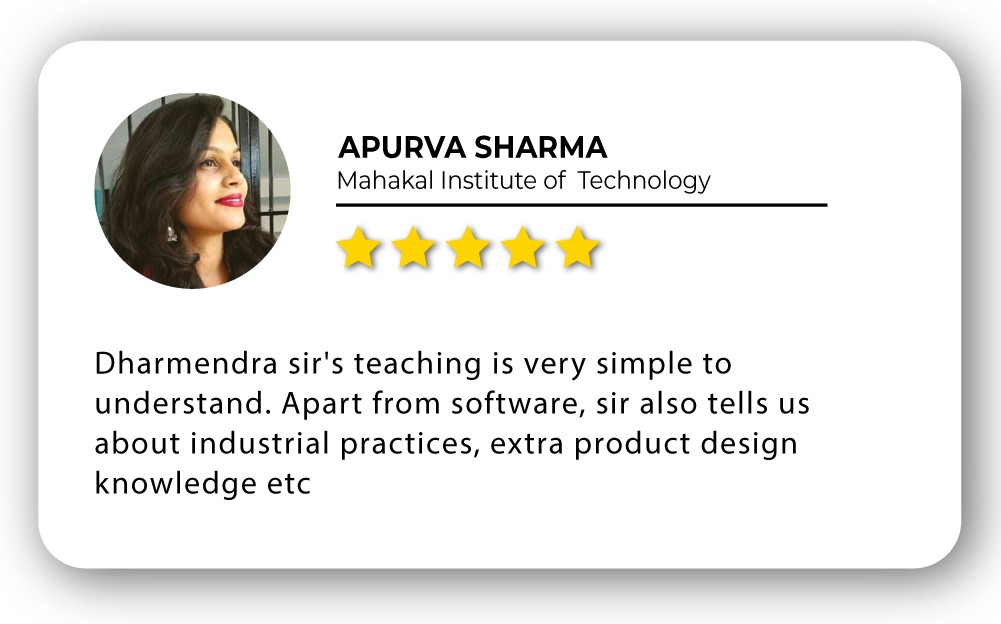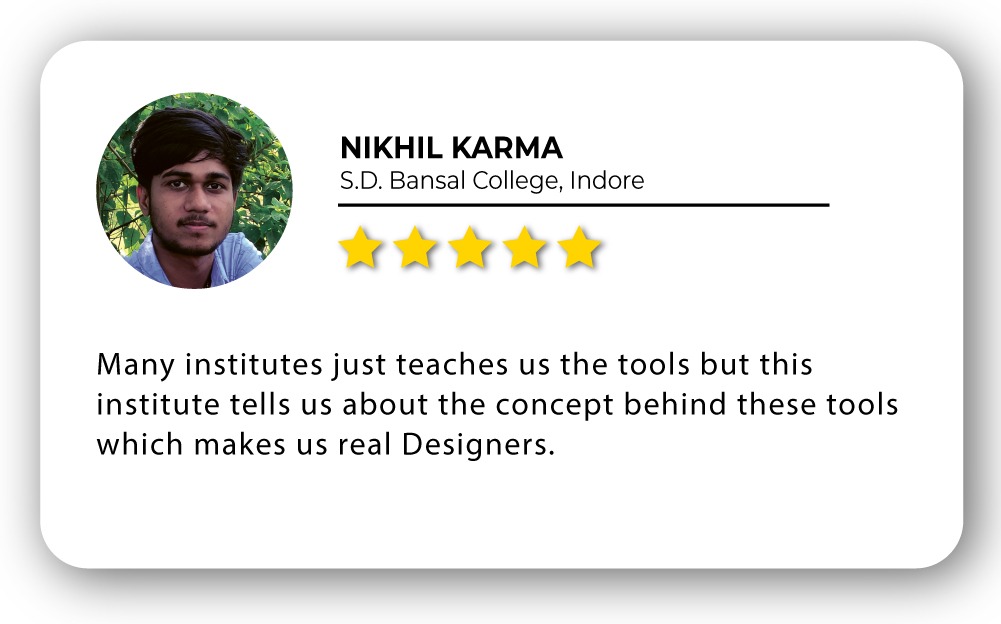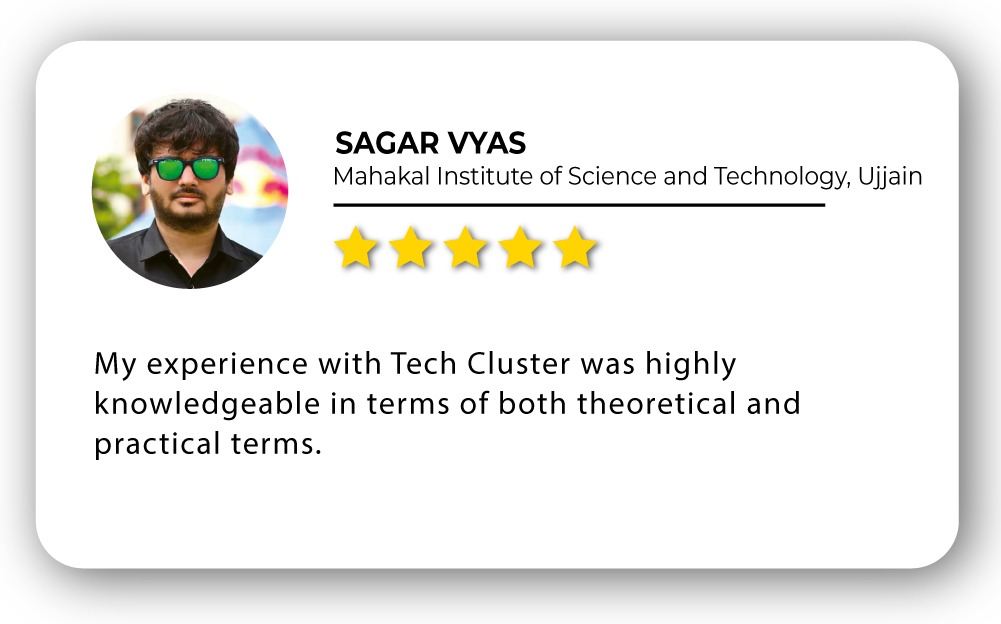
Autodesk Maya for Game Design Training in India
- Real-Time Experts Sessions
- LIVE Project
- Certification
- Affordable Fees
- Flexibility
- Placement Support
animation, rigging, and texturing in game development. Game designers use Maya to create
high-quality characters, environments, props, and animations that integrate seamlessly with
game engines like Unreal Engine and Unity.
Maya provides tools for polygonal modeling, UV mapping, PBR texturing, rigging, keyframe
animation, motion capture, and dynamic simulations—all essential for game asset creation.
If you are looking to master Autodesk Maya for game design, Tech Cluster in Indore offers
industry-standard training from basic to advanced levels, covering real-time projects and
100% placement assistance.
Applications
Maya is a powerful 3D software widely used across industries such as gaming, film, VFX, AR/VR, architecture, and product design. It excels in creating game assets like characters, props, weapons, and vehicles, as well as detailed game environments through modular design and terrain building. Maya is also pivotal for producing cinematic cutscenes with high-quality animations that support immersive storytelling. It supports 3D animation workflows including character rigging, keyframe animation, and motion capture. Additionally, Maya enables texturing and shading using the PBR workflow to achieve realistic material finishes, and supports game prototyping to visualize ideas quickly before moving into full-scale production.
Course Highlights:
Autodesk Maya Foundation:
- Introduction to Maya Interface & Navigation
- 3D Modeling (Hard Surface & Organic)
- Sculpting Basics
- UV Mapping & Texturing (PBR Workflow)
- Lighting & Rendering in Arnold
- Intro to Rigging & Animation
- Exporting Models for Game Engines
Autodesk Maya Advanced :
- Game-Ready Asset Creation (Low-Poly & High-Poly Workflows)
- Retopology for Optimization
- Normal Maps, Baking, and Texture Painting
- Procedural Materials & Shaders
- Character Rigging & Animation
- Game Engine Integration (Unreal Engine & Unity)
- Creating Modular Environments
- Physics & Simulations for Realistic Effects
- Cinematic Rendering & Walkthroughs
Duration :
- 45 Hours Theory
- 25 Hours Practical
- 30 Hours Project work
Technical Features:
Autodesk Maya Foundation:
Introduction to Maya and Tools
In this module, you’ll get familiar with the Maya interface, learning how to efficiently navigate the workspace. You’ll explore viewport controls and essential shortcuts to move around your 3D scene seamlessly. A clear understanding of the difference between Object Mode and Component Mode will help you switch between manipulating whole objects and editing their components (vertices, edges, faces). You’ll also practice transformations like Move, Scale, and Rotate to position your models accurately. Lastly, you’ll learn how to understand 3D space and properly set up your scene, forming the foundation for all your future projects.
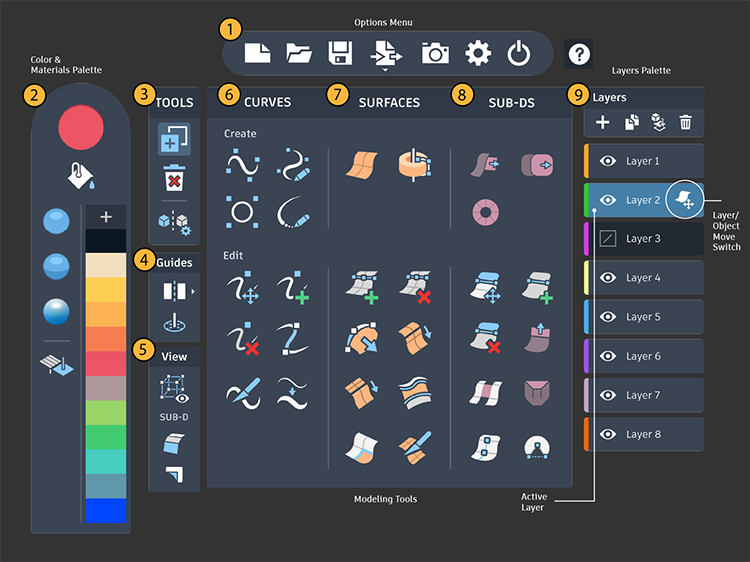

Basic and Complex Modelling
This section introduces the core modeling tools in Maya. You’ll begin with primitive objects like cubes, spheres, cylinders, and torus shapes—basic building blocks for any model. Then, dive into polygonal modeling, where you’ll edit vertices, edges, and faces to craft detailed shapes. Explore hard surface modeling techniques ideal for creating weapons, vehicles, and architecture, and shift into organic modeling for characters, creatures, and plants. You’ll also get hands-on with sculpting tools like Artisan and brush-based workflows for fine surface details. Finally, learn to enhance and modify geometry using essential modifiers such as Mirror, Subdivision, Boolean, and Bevel

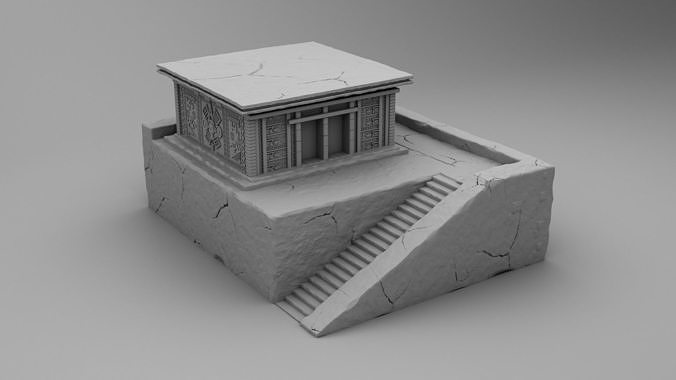
Texturing & UV Mapping
In this section, you will focus on UV unwrapping to prepare your models for texturing, learning techniques for efficient UV optimization to avoid stretching and overlapping. Then, move into the PBR (Physically Based Rendering) texturing workflow, where you’ll create realistic materials using maps like normal, ambient occlusion (AO), roughness, and height. You’ll also learn how to bake these maps in Maya to create detailed, optimized textures. Finally, explore Substance 3D Painter integration, where you’ll take your UV-mapped models into Substance for advanced painting and texturing, enhancing the realism of your assets with precision.


Lighting and Rendering
In this section, you will dive into Maya Arnold rendering, mastering techniques for creating realistic lighting setups using HDRI (High Dynamic Range Imaging) to enhance your scenes with natural, environment-based lighting. You will also learn about Global Illumination and Light Probes to simulate how light interacts with objects in a scene, achieving more lifelike renders. Additionally, you’ll explore volumetric effects such as fog, smoke, and fire, adding atmospheric elements to your renders for cinematic depth and realism. This combination of lighting and effects will help you create high-quality visual outputs with Arnold’s powerful rendering engine.


Character Rigging & Animation
In this section, you will explore bone setup and the essential concepts of IK (Inverse Kinematics) and FK (Forward Kinematics) rigging, enabling you to create efficient, flexible rigs for characters. You will dive into skin weights and deformations, learning how to properly influence the geometry to ensure smooth and natural movement. The module also covers key animation techniques, including walk cycles, run cycles, and combat animations, crucial for bringing your characters to life. Lastly, you will explore motion capture and retargeting processes, allowing you to use motion data from actors and apply it to your 3D characters for more realistic movements and performances
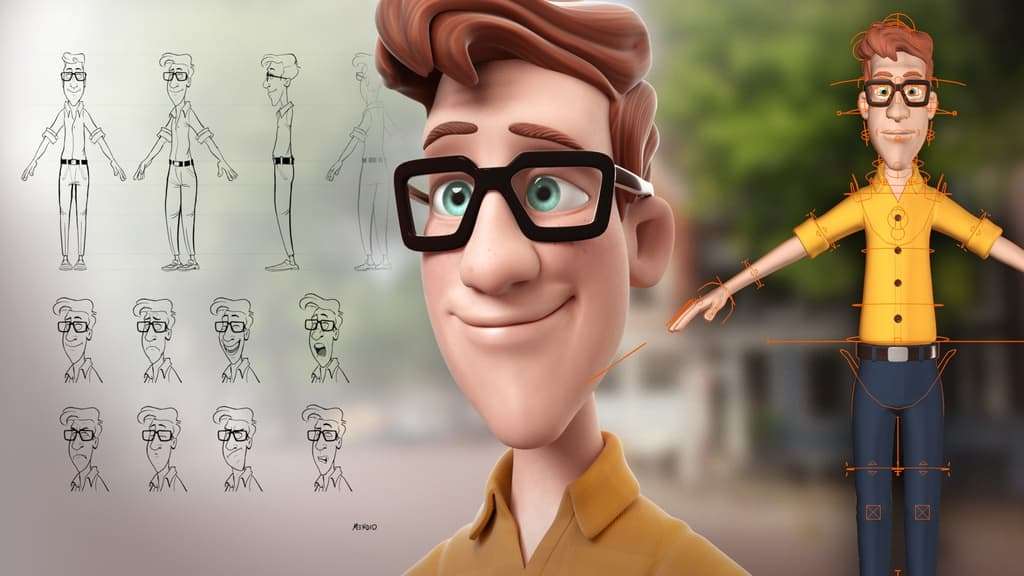

Autodesk Maya Advanced
Game Ready Asset Creation
This section covers the process of creating low-poly and high-poly models, starting with highly detailed sculpts and reducing polygon counts for game optimization. You will learn retopology techniques to ensure that models are game-ready while maintaining the necessary detail in key areas. Additionally, you will be introduced to LOD (Level of Detail) setup, a critical method for optimizing models for real-time rendering in game engines. The workflow also includes exporting models to Unreal Engine & Unity, ensuring that your assets are efficiently imported and properly set up for use in game environments.


Procedural Modeling & Advanced Workflows
This module covers node-based workflows for creating complex assets and environments procedurally. You’ll learn how to generate generative environments such as rocks, trees, and landscapes, using nodes to define and manipulate these assets in a flexible and non-destructive way. The focus will also be on terrain generation using procedural methods, including techniques for creating natural landscapes that are both visually appealing and optimized for performance. Additionally, you’ll explore terrain optimization strategies to ensure that large-scale environments run efficiently in real-time applications like games.


Dynamic Simulations & VFX
In this module, you’ll dive into physics-based simulations for creating realistic interactions in your 3D environments. You’ll learn to simulate rigid body dynamics, including how objects behave when they collide, break apart, or interact with forces like gravity. You’ll also explore cloth and hair simulations, creating lifelike fabric and hair movement in response to character actions and environmental factors. Additionally, you’ll work with fluid, smoke, and fire effects, learning how to simulate and render dynamic fluid flows, smoke, and realistic fire, bringing your scenes to life with intricate, physically accurate effects.


Lighting & Cinematic Rendering
In this module, you will explore realtime rendering techniques using Arnold and Viewport 2.0 in Maya. You’ll learn how to set up ray tracing and global illumination for achieving realistic lighting, reflections, and shadows. This will enable you to produce high-quality renders with accurate lighting and surface details in real time, enhancing the realism of your scenes. Additionally, you’ll learn to create film-quality cutscenes for games, focusing on cinematic storytelling, camera work, lighting, and animation techniques that deliver a visually stunning final product.


Game Engine Integration
This module will teach you how to export assets created in Maya to Unreal Engine and Unity, ensuring compatibility and optimal integration within these game engines. You’ll learn to set up materials and textures in both engines, making sure the visual quality is maintained with correct shader settings. Additionally, you’ll delve into setting up collision and physics within the engines, enabling interactive and dynamic behaviors for game objects, characters, and environments. This process is essential for ensuring that the assets function as intended in real-time applications and games.


Upcoming Batches
Certifications
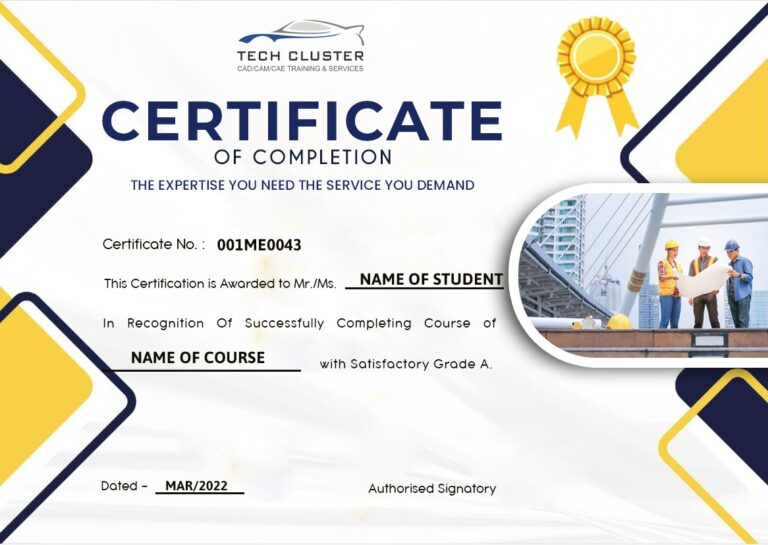
Autodesk Maya Certification Training
About Autodesk Maya Certification Training in Indore at Tech Cluster
Reviews
